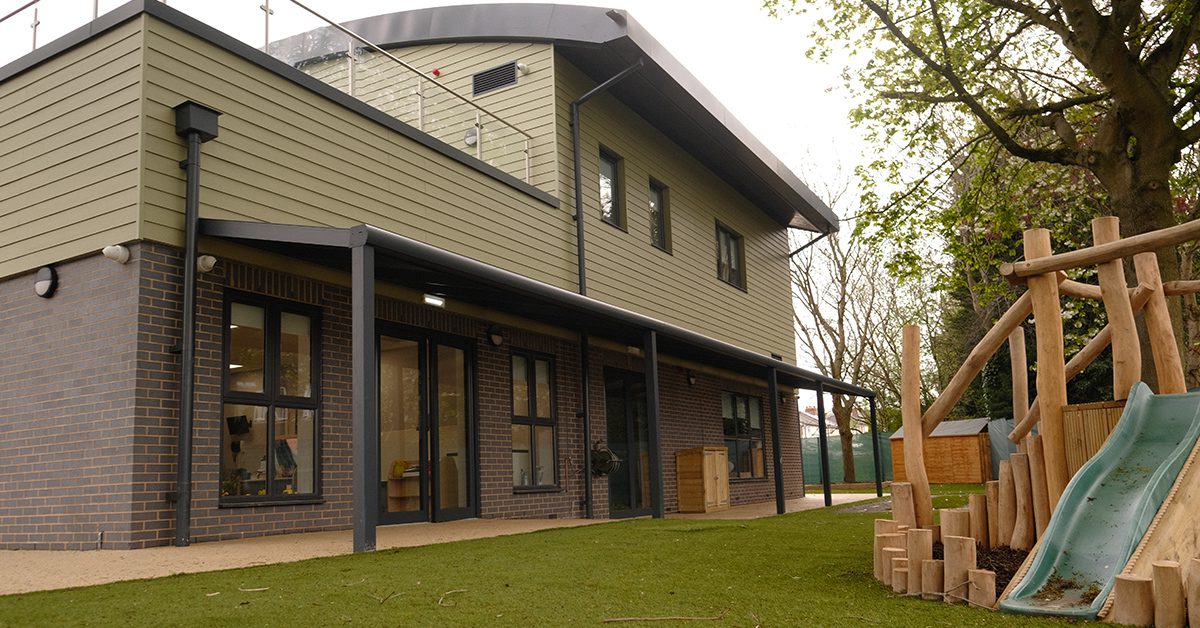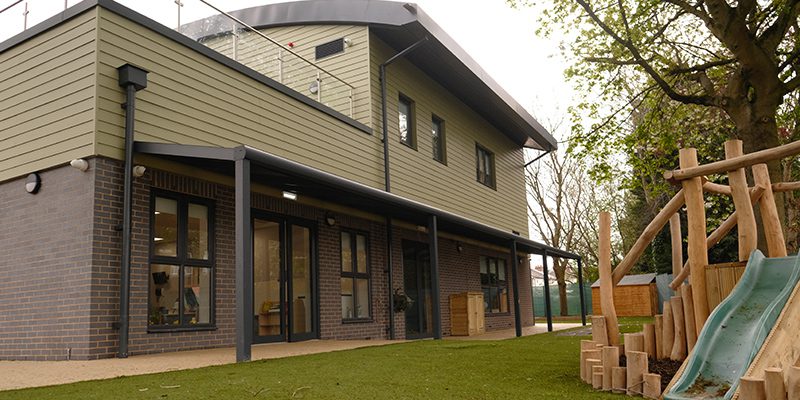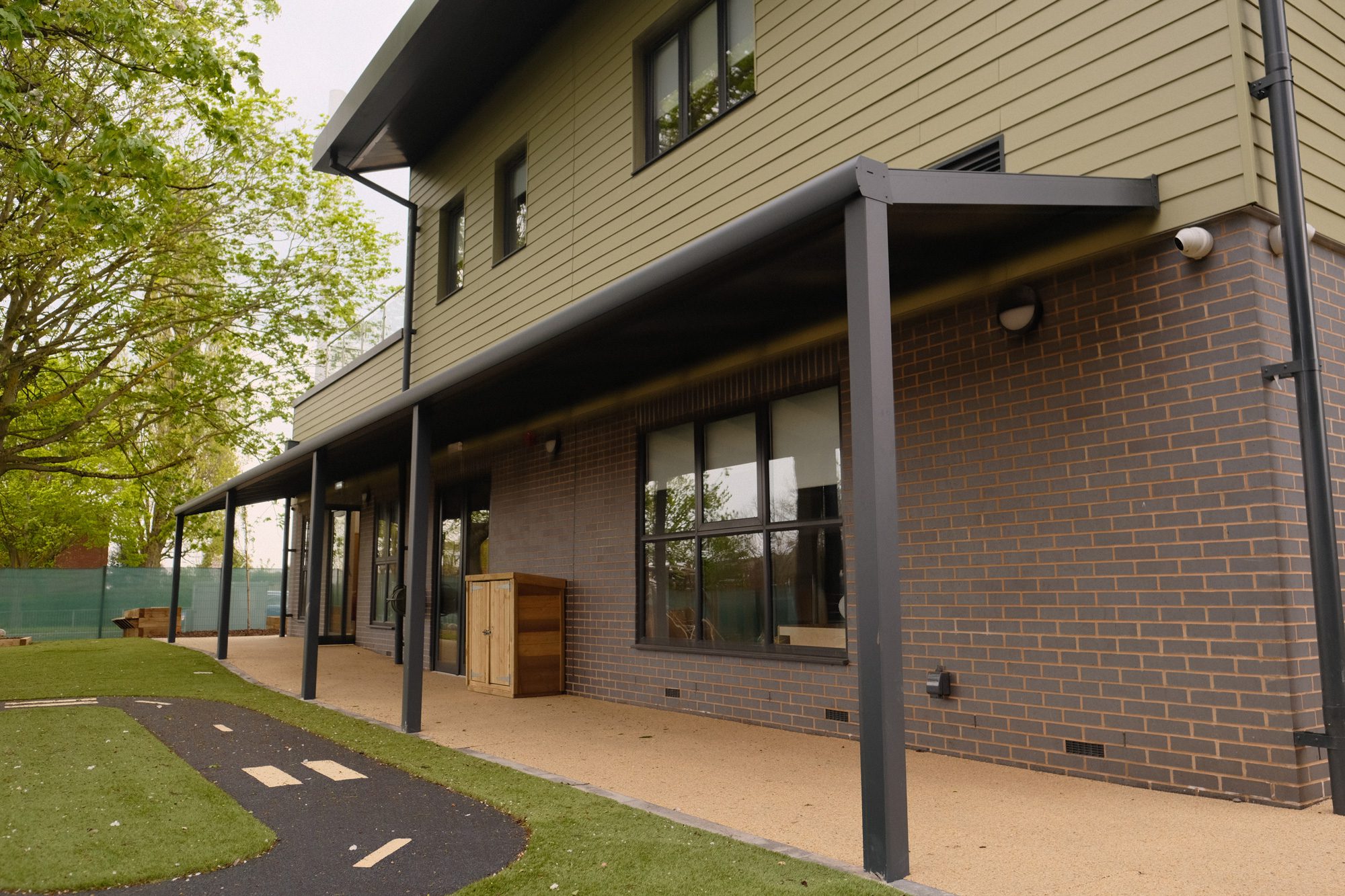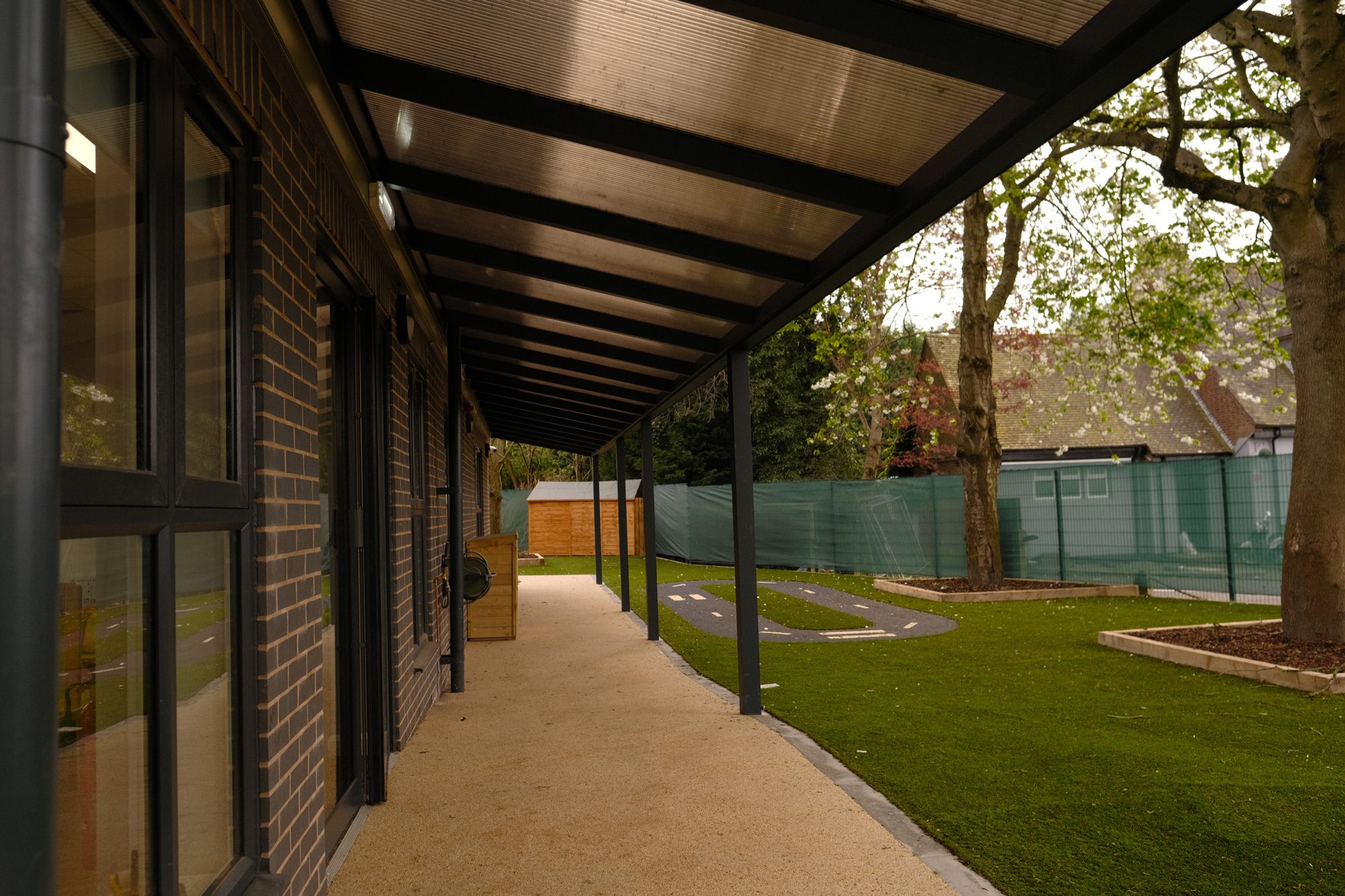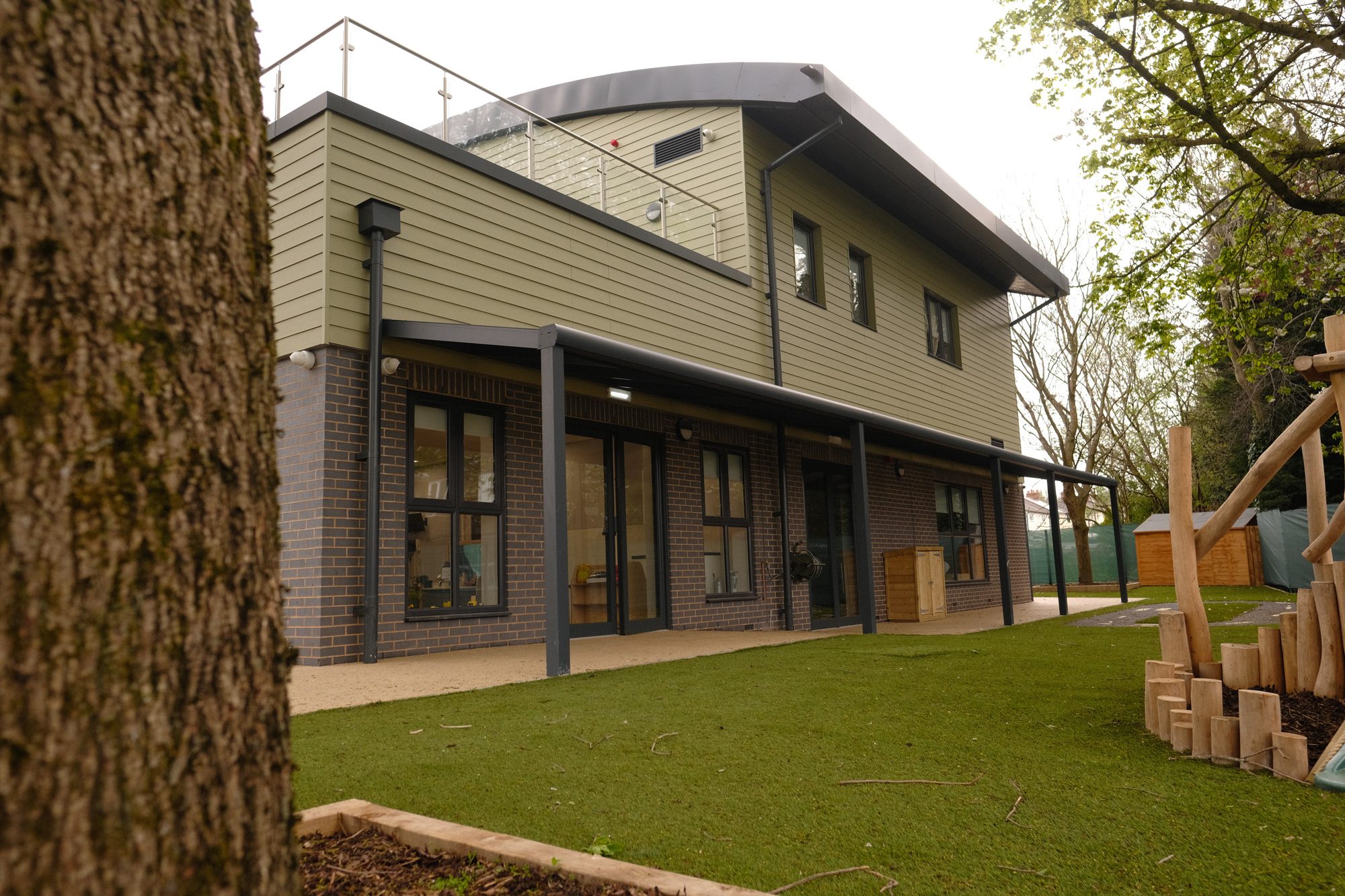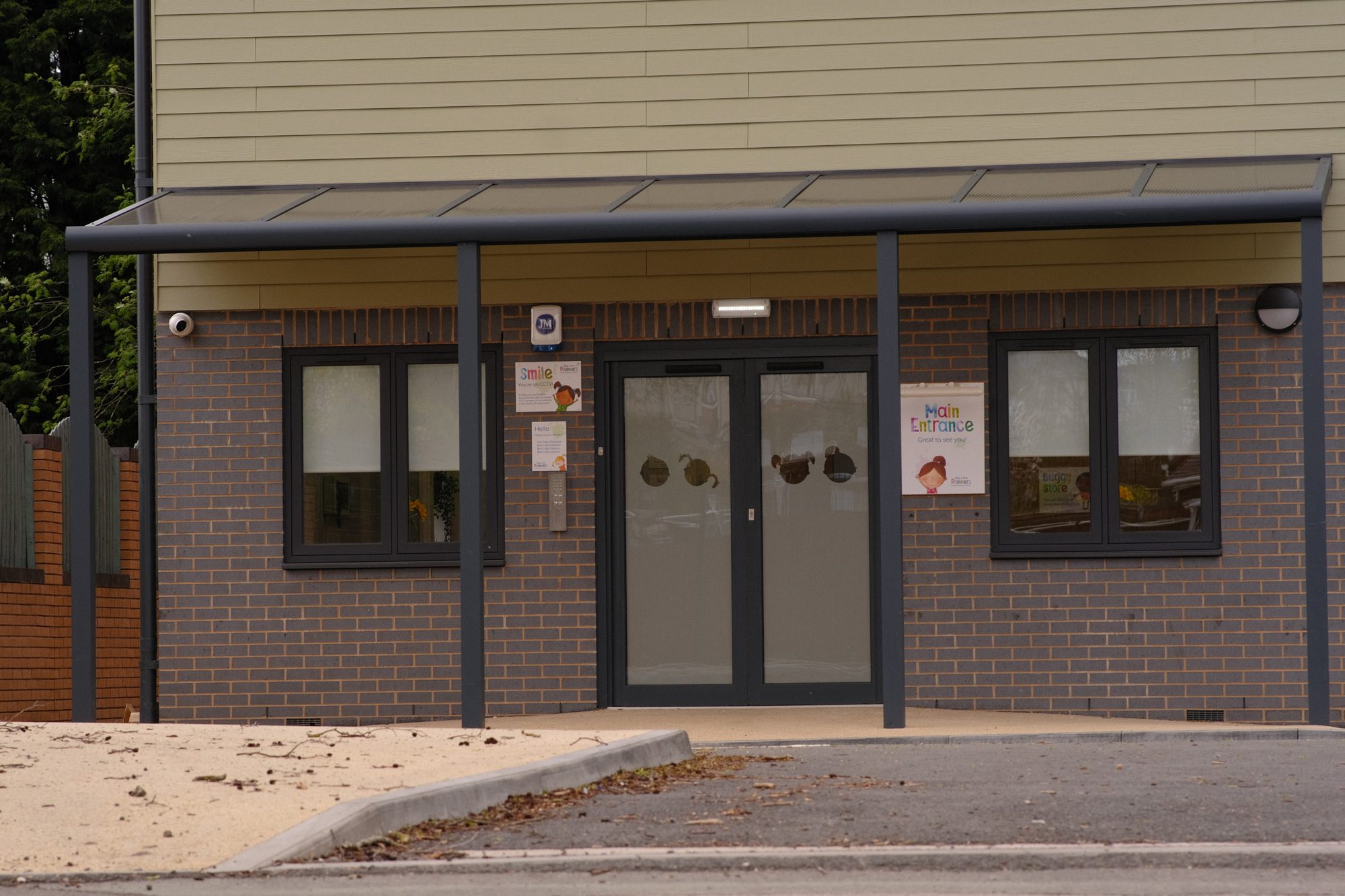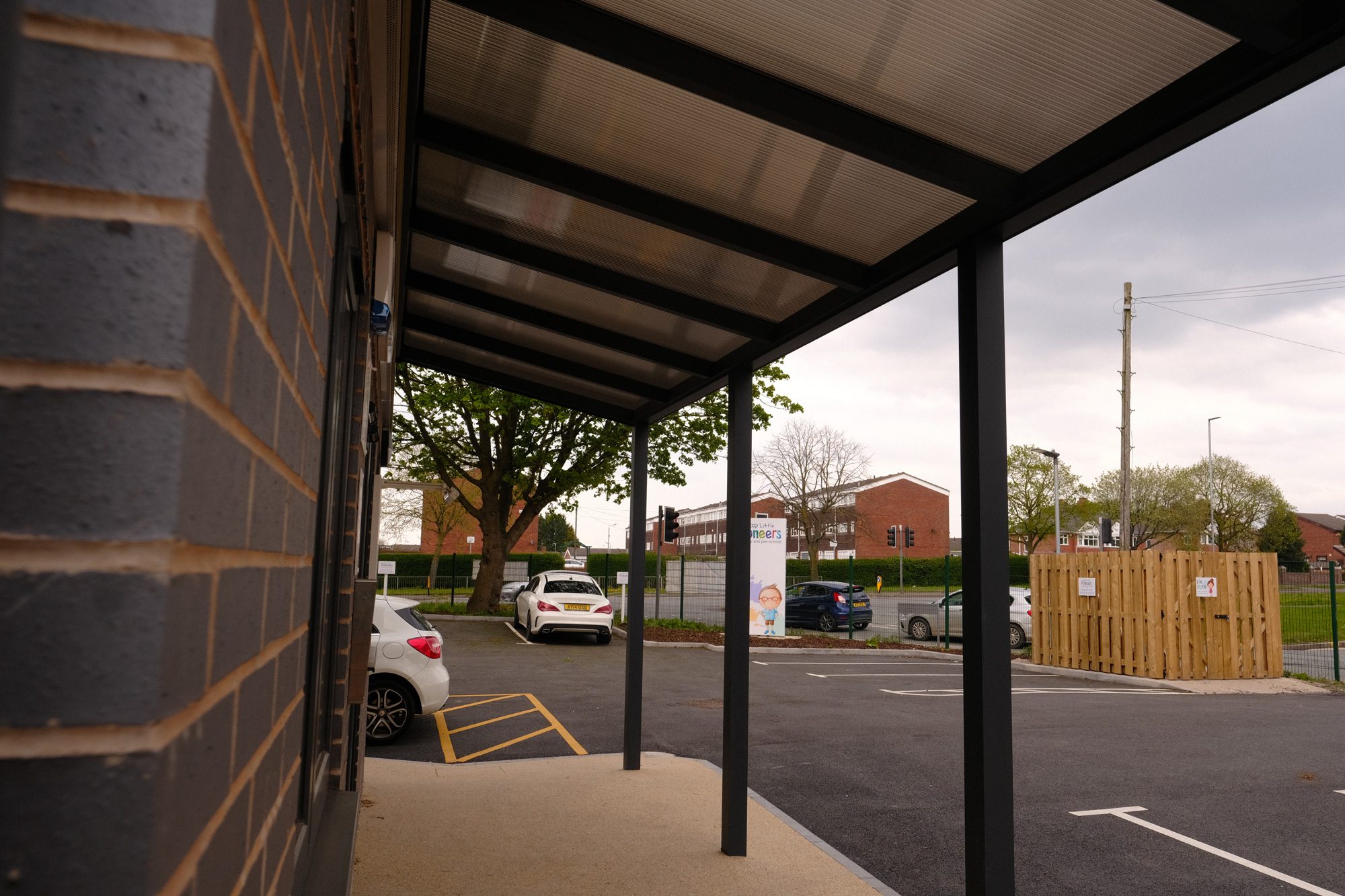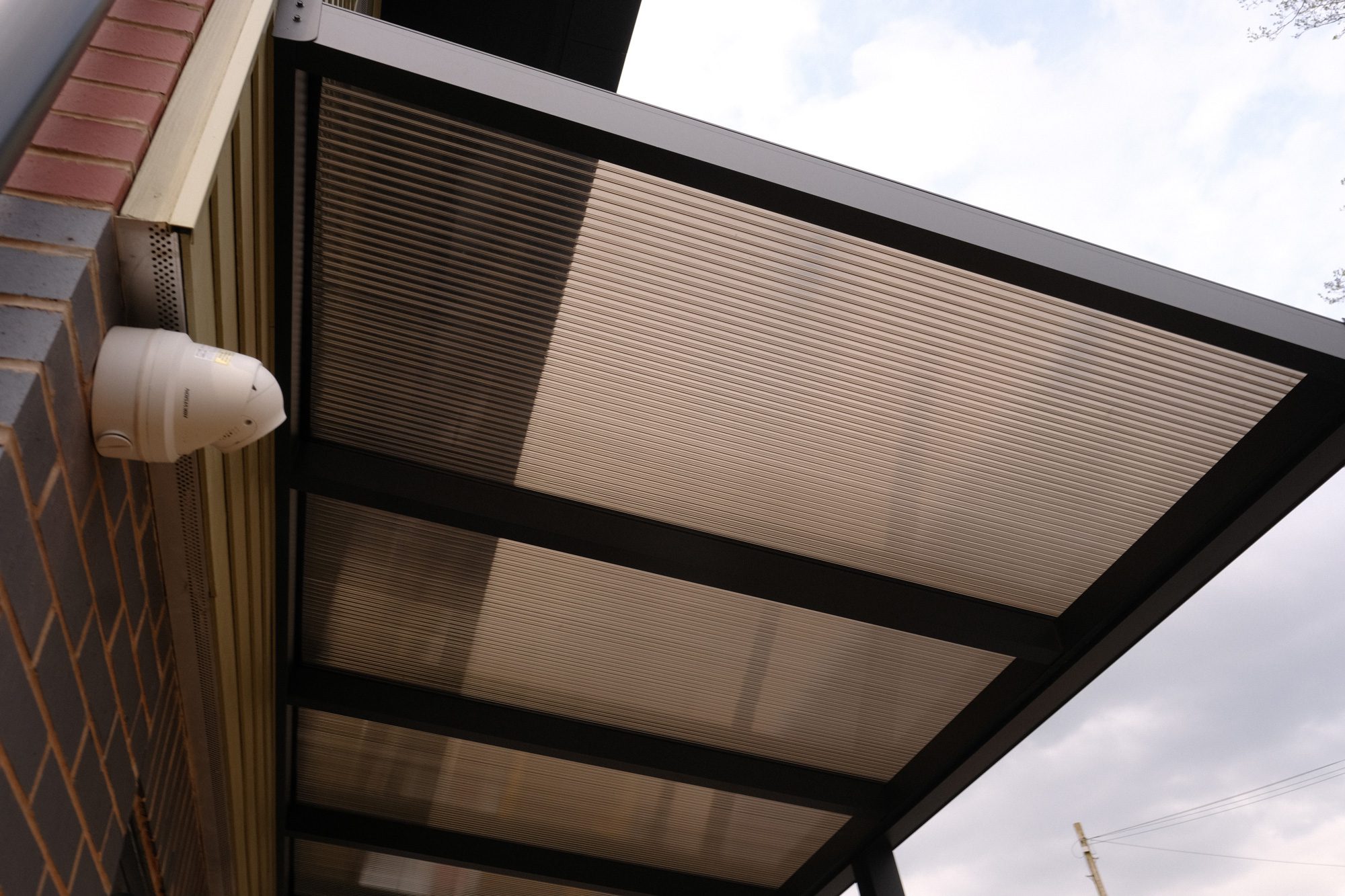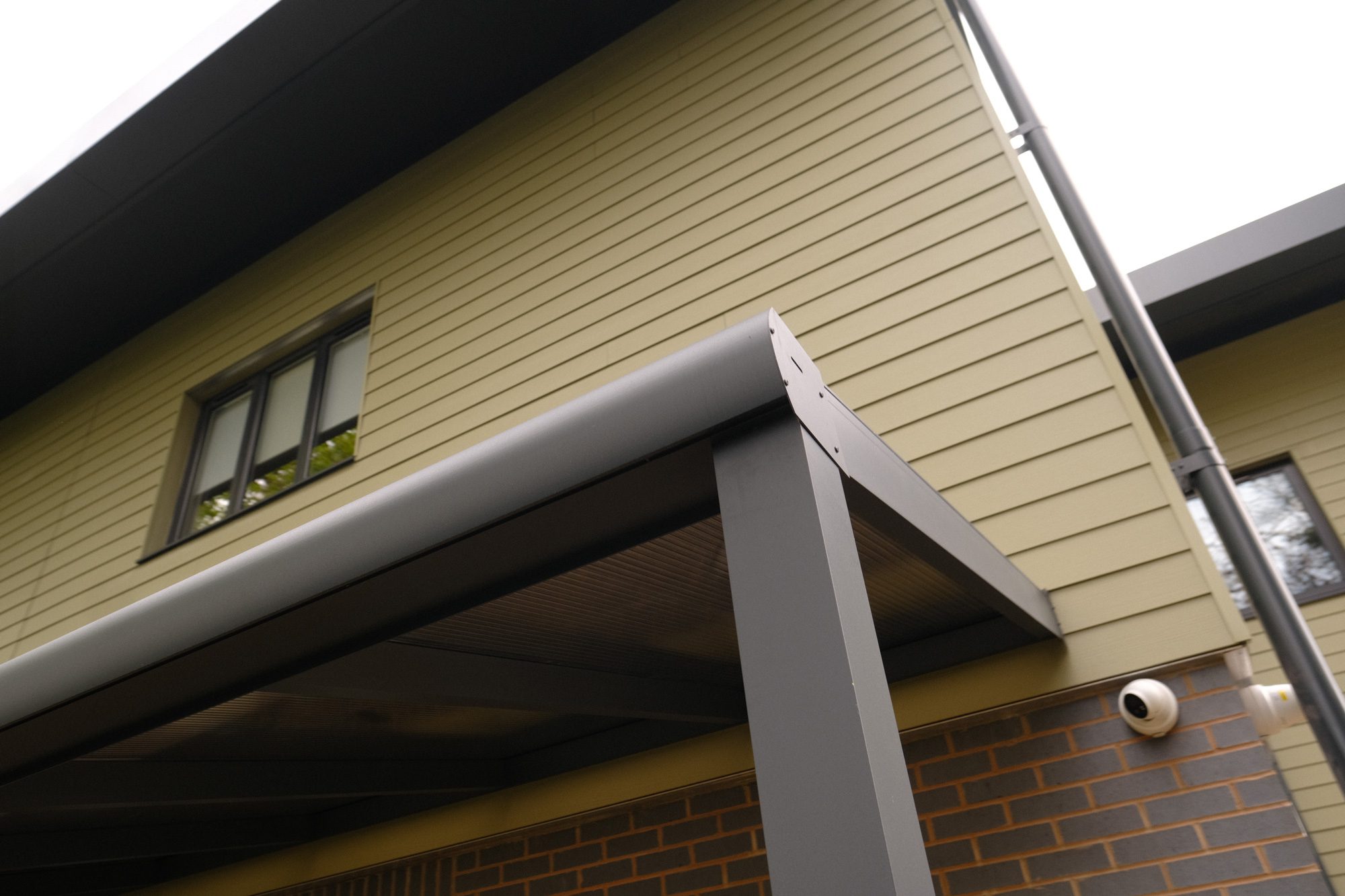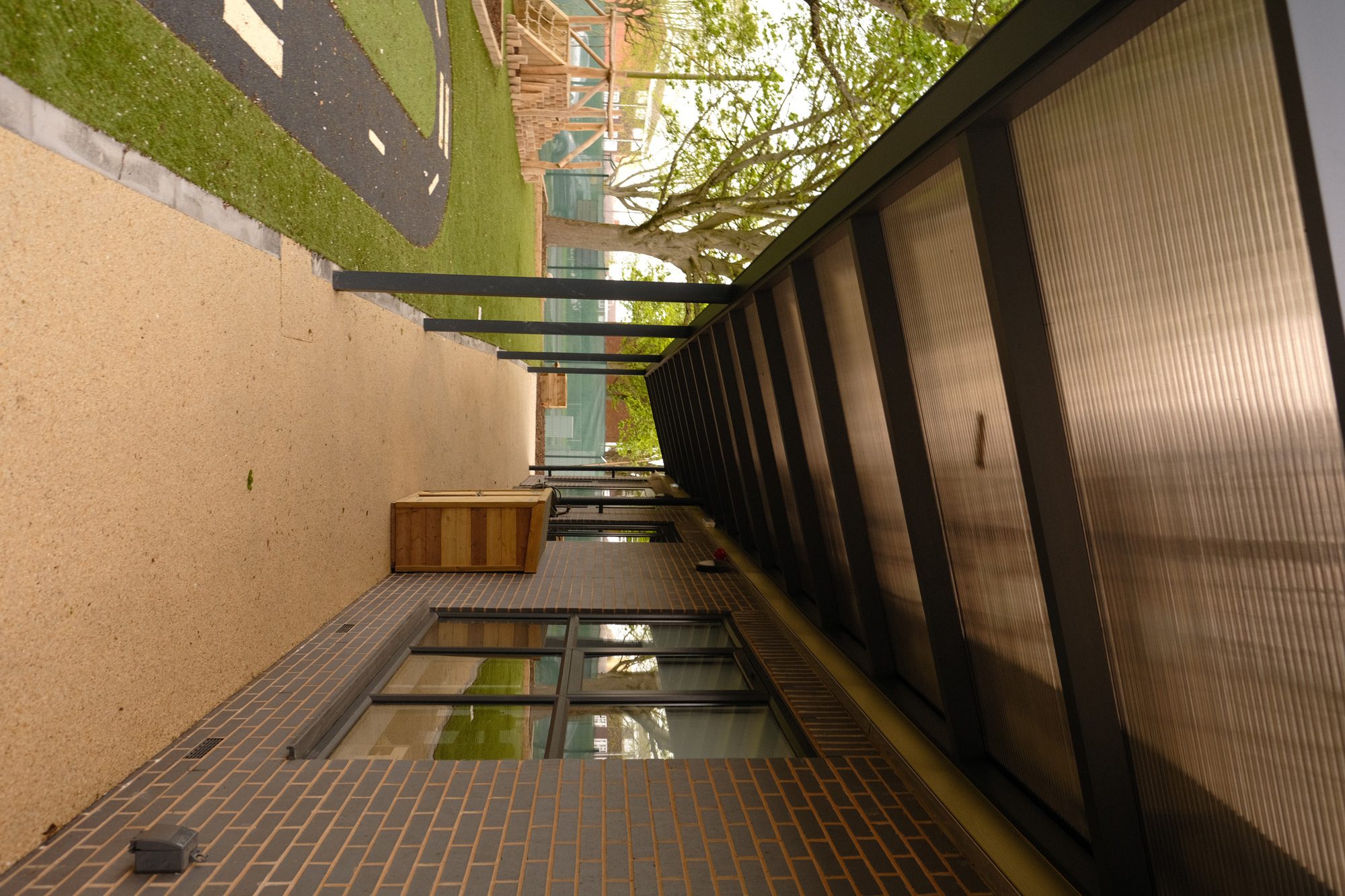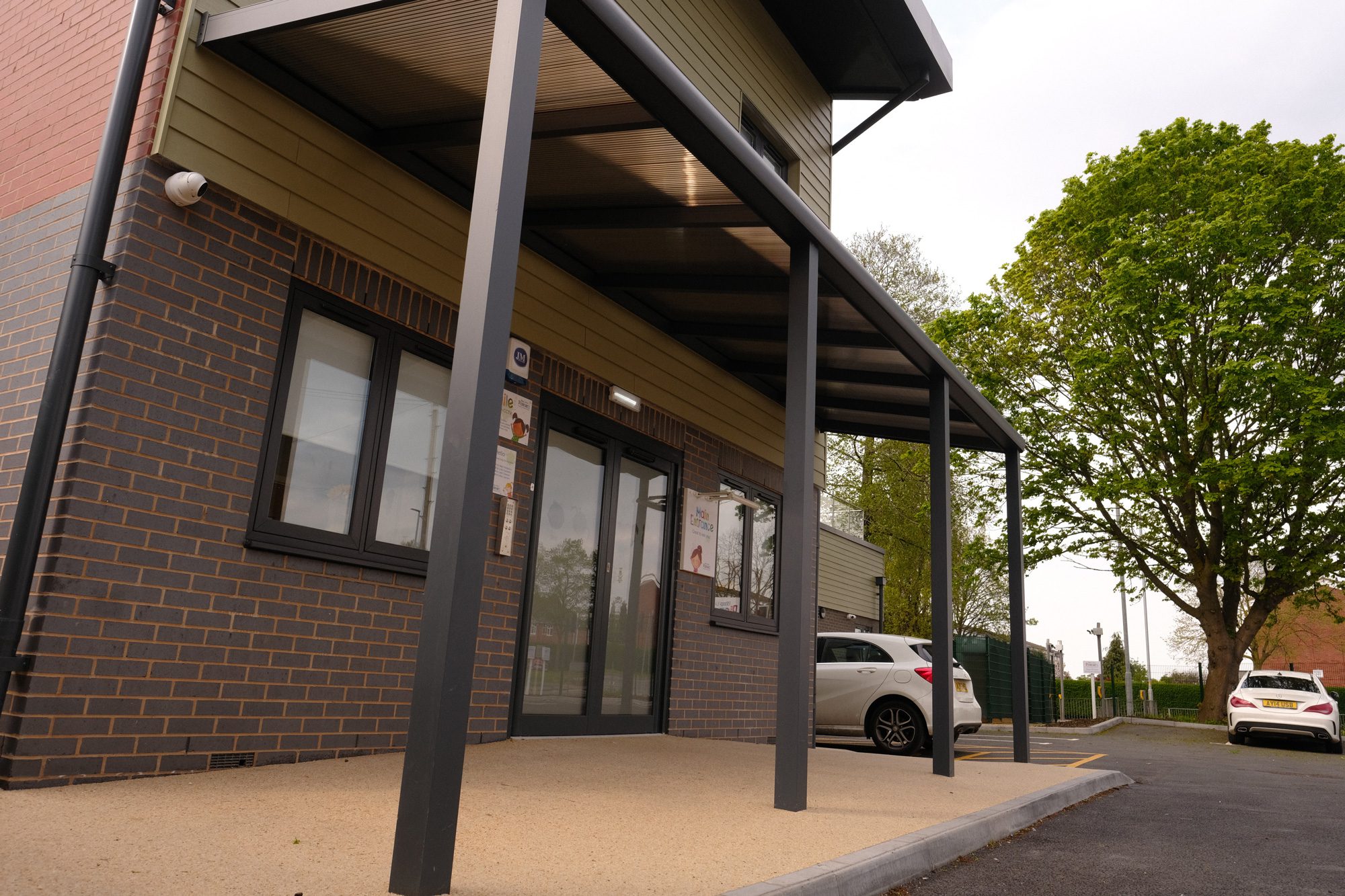The importance of creating functional and aesthetically pleasing spaces continues to grow, and architectural innovations play a vital role in transforming commercial buildings and educational institutions. Verandas have long been associated with residential buildings, providing a seamless connection between indoor and outdoor spaces. However, the versatility and benefits of these verandas makes them an ideal addition to commercial buildings and schools and have made them immensely popular. Whether it is an office space, a retail establishment, or an educational institution, the integration of a glass or polycarbonate veranda can elevate the overall design, adding a unique touch of elegance, creating an inviting and conducive environment for occupants, and enhancing the building’s functionality. Here, we will explore the various advantages of incorporating verandas into commercial buildings and schools, highlighting their transformative impact with our recent installation at the Co-Op’s Little Pioneers as a case study.
The first impression plays a crucial role in any commercial setting. Verandas offer a unique opportunity to enhance the visual appeal of the building and create a unique brand identity for businesses and educational institutions. They effortlessly add a touch of elegance and sophistication to the building, creating a distinctive look that sets them apart from the others, enhancing its architectural features and the outdoor aesthetic. Whether it is a modern, glass encased veranda, a traditional open-concept structure, or a stylish louvred or retractable system, a well-designed veranda can instantly capture the attention of any visitors, leaving them with a lasting impression of your business or school. At their Lanesfield site, Co-Op’s Little Pioneers was careful to incorporate the choice of bronze polycarbonate and the anthracite grey aluminium frame into the building’s overall aesthetic.
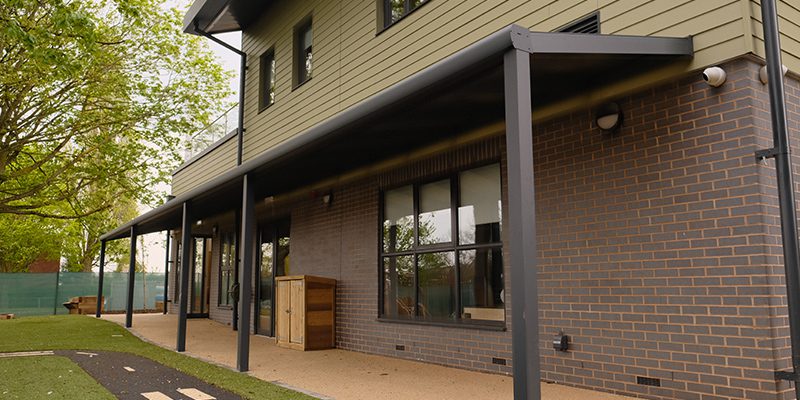
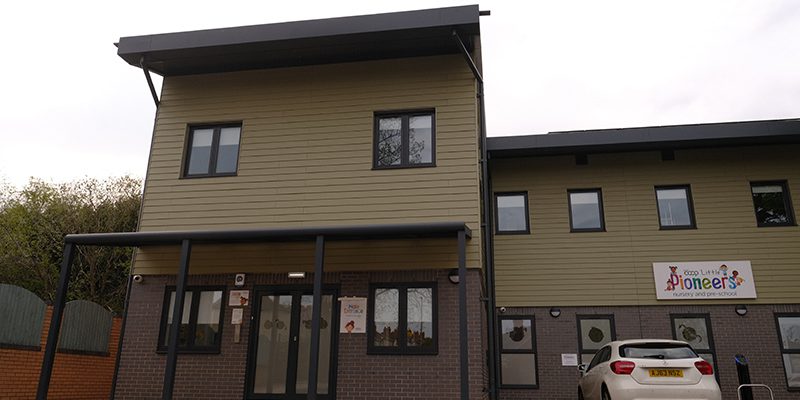
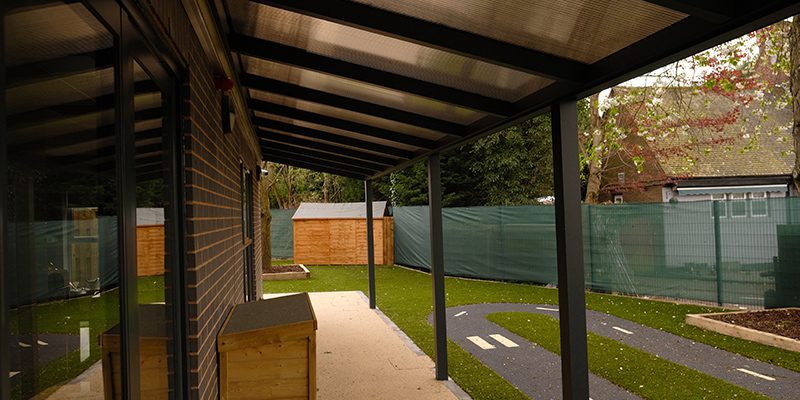

Interested in one of our recent commercial projects? Click here to check our full video!
For more information on our commercial options, please click here.
To find our more about Co-Op’s Little Pioneers, please see their website: https://www.littlepioneers.coop/.
Got questions? Here are a few of our most frequently asked!
Why are verandas beneficial for commercial buildings and schools?
Verandas offer both aesthetic and functional benefits, providing an inviting and visually appealing space while enhancing the building’s architectural features. They create a seamless connection between indoor and outdoor areas, giving commercial buildings a unique identity and schools a versatile space that fosters creativity and social interaction.
How do verandas improve the energy efficiency of a building?
By allowing natural light to flood in, verandas reduce the need for artificial lighting, lowering energy consumption and costs. Polycarbonate and glass verandas filter sunlight, creating a comfortable, naturally lit space that can enhance productivity and mood for employees and students alike.
What materials are used in these verandas, and how do they withstand the weather?
Our verandas are constructed from powder-coated aluminium frames, which resist rust and weather damage. Roofs are made from durable 8.8mm laminated glass or 16mm triple-wall polycarbonate, both of which offer long-lasting protection against rain, snow, and UV rays, making them suitable for year-round use.
Can verandas be customised to fit the design of a specific building?
Yes, verandas are fully customisable. With a choice of materials, colours, and finishes, they can be tailored to match the aesthetic of any building, whether modern or traditional. For example, Co-Op’s Little Pioneers selected a bronze polycarbonate roof and anthracite grey frame to complement their site’s design.
What are the potential uses of verandas in educational institutions?
Verandas in schools serve as outdoor classrooms, providing a stimulating learning environment where students can benefit from fresh air and natural surroundings. They can also be used as play areas during breaks, encouraging physical activity and social interaction, which fosters creativity and overall well-being.
How do verandas contribute to an organisation's sustainability goals?
Incorporating verandas promotes energy efficiency through the use of natural lighting and can include energy-efficient features, such as LED lighting. By reducing reliance on artificial lighting, verandas contribute to lower energy usage, supporting a building’s sustainability efforts and reducing its carbon footprint.
